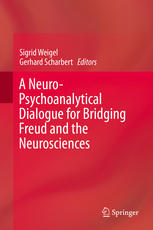

Most ebook files are in PDF format, so you can easily read them using various software such as Foxit Reader or directly on the Google Chrome browser.
Some ebook files are released by publishers in other formats such as .awz, .mobi, .epub, .fb2, etc. You may need to install specific software to read these formats on mobile/PC, such as Calibre.
Please read the tutorial at this link. https://ebooknice.com/page/post?id=faq
We offer FREE conversion to the popular formats you request; however, this may take some time. Therefore, right after payment, please email us, and we will try to provide the service as quickly as possible.
For some exceptional file formats or broken links (if any), please refrain from opening any disputes. Instead, email us first, and we will try to assist within a maximum of 6 hours.
EbookNice Team

Status:
Available0.0
0 reviewsThe book presents an overview of the term neuropsychoanalysis and traces its historical and scientific foundations as well as its cultural implications. It also turns its attention to some blind spots, open questions, and to what the future may hold. It examines the cooperative and conflicted relationship between psychoanalysis and neuroscience. Articles from different fields investigate the neurological basis of psychoanalysis as well as the psychological terms of neurology. They also discuss what psychoanalysis has to offer neuroscience. In addition, the emerging neuro-psychoanalytical dialogue is enriched here by the voice of a culturally informed history of science. The book brings leading authorities on these topics into conversation with each other, creating an unprecedented opportunity to better understand the ‘language’ of the psyche. Specific concerns include the discussion of corporeality, how the body figures into psychoanalysis, the meaning of the unconscious in connection with dreams, unconscious fantasies, and the field of epigenetics. Following a historical perspective the book provides a re-reading of Freud's drive theory, exploring his concept of ‘life’ at the threshold of science and culture as well as the relationship between various representations, somatic states and the origin of drive. Overall, the book argues that if the different methodological approaches of psychoanalysis and neuroscience are acknowledged not only for their individual uniqueness but also as a dialectic, then the resulting epistemological and methodological dialogue might open up a fascinating body of neuropsychoanalytical knowledge.